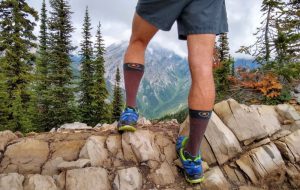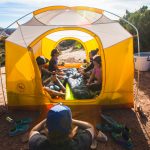Choosing the best rainwear can be a daunting task for many people. With so many different materials, styles, and brands to choose from, it’s hard to know where to start. In this article, we will go over how you can find the perfect rainwear for your needs by following these simple steps
Table of Contents
What is a rain jacket?
Rain jackets are typically made from a waterproof material with sealed seams. The main purpose of a rain jacket is to keep you dry in wet conditions, whether it be while out on the trail or walking around town.
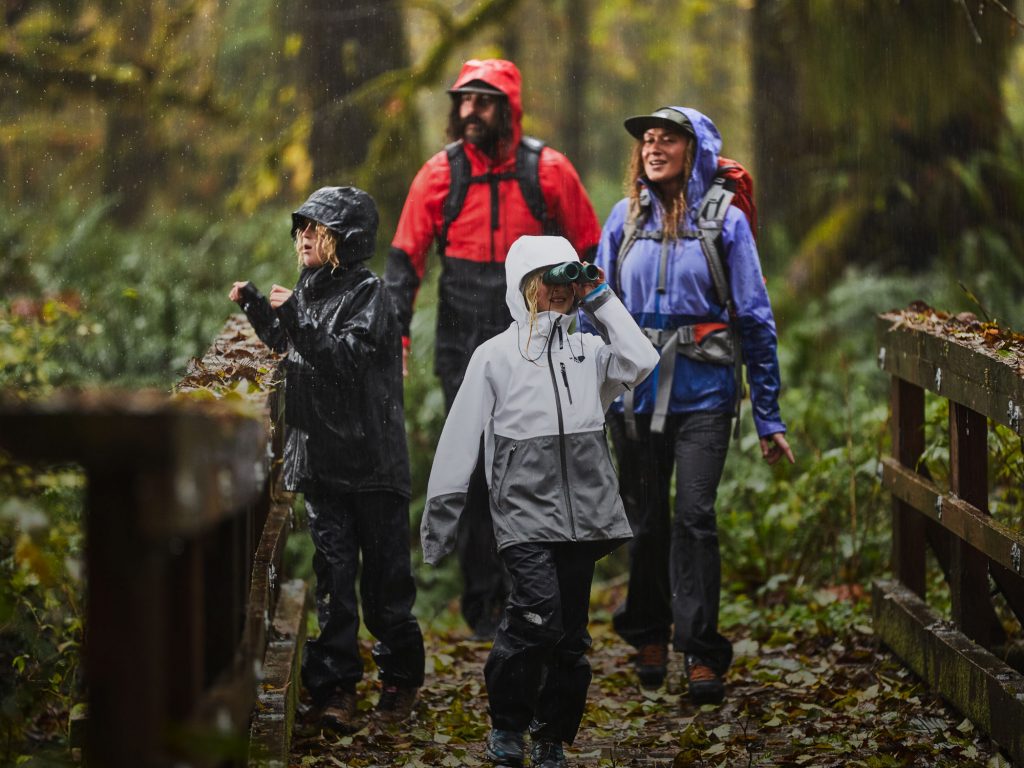
Types of Weather Protection
Different types of jackets offer different levels of protection against the elements. Understanding what type you need will help narrow down your search for a jacket that is right for you.
- Water-resistant coats typically use an impregnated treatment on their outer shell fabric in order to block out most of the rain, wind, and other elements. While water-resistant coats tend to be less expensive than waterproof ones, they will not breathe as well and may feel clammy in humid conditions.
- Weather Protection: Choose a material that can protect you from whatever weather you’re likely to encounter most frequently when wearing your jacket. If it’s just for light showers, a water-resistant material will be suitable. In the case you’re going to be out in heavy rain for several hours at a time, look for outer shell fabric that’s waterproof and fully breathable.

Windproof vs. wind-resistant
- Windproof jackets are made from a material that completely prevents the wind from flowing through. This means they’re typically more expensive and heavier than their counterparts, but also offer better protection against chilly winds in colder weather conditions
- A wind-resistant jacket is designed to keep out light breezes and prevent heat loss. It will provide less insulation than a regular jacket and won’t be as effective in colder conditions.
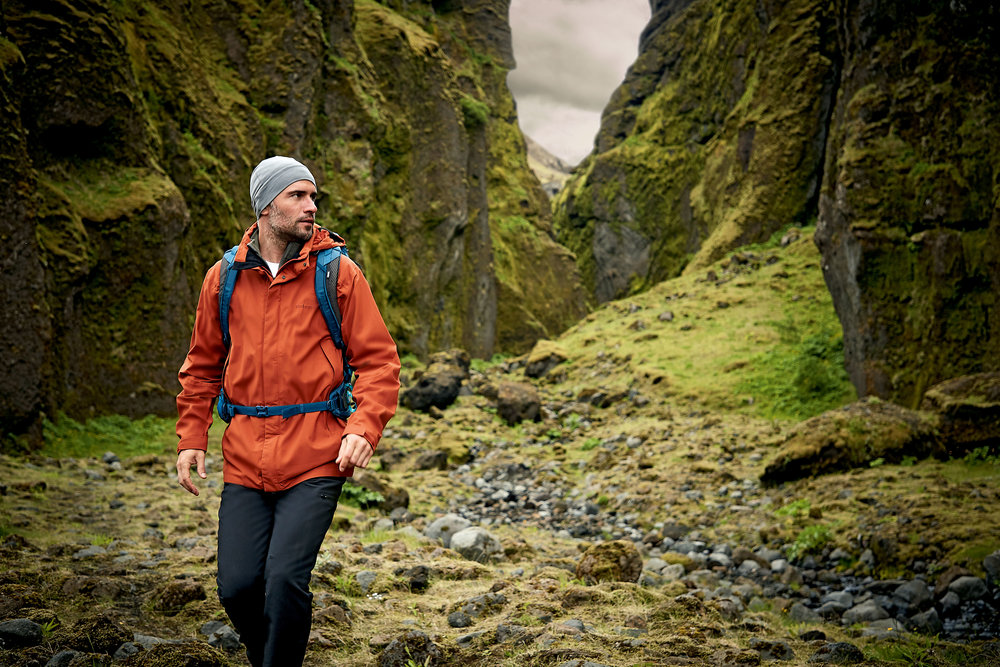
Type of Rainwear
- Gortex Jackets: Gortex is an abbreviation for Gore-Tex which was the first waterproof-breathable fabric to be used in outerwear clothing. It’s extremely lightweight, waterproof, and windproof. It’s also very breathable so it allows excess moisture to escape from your body
- Hardshell Jackets: These are the most protective type of rain jacket offering excellent weather protection in all sorts of conditions. They’re usually made with a hard shell outer fabric that helps protect you against harsh winds and rainfall, as well as a waterproof membrane designed to keep moisture from seeping through
- Softshell Jackets: Softshell jackets are ideal for hiking and other outdoor activities. They’re typically made with stretchy fabrics that move easily, but still offer windproof protection against chilly breezes in colder weather conditions
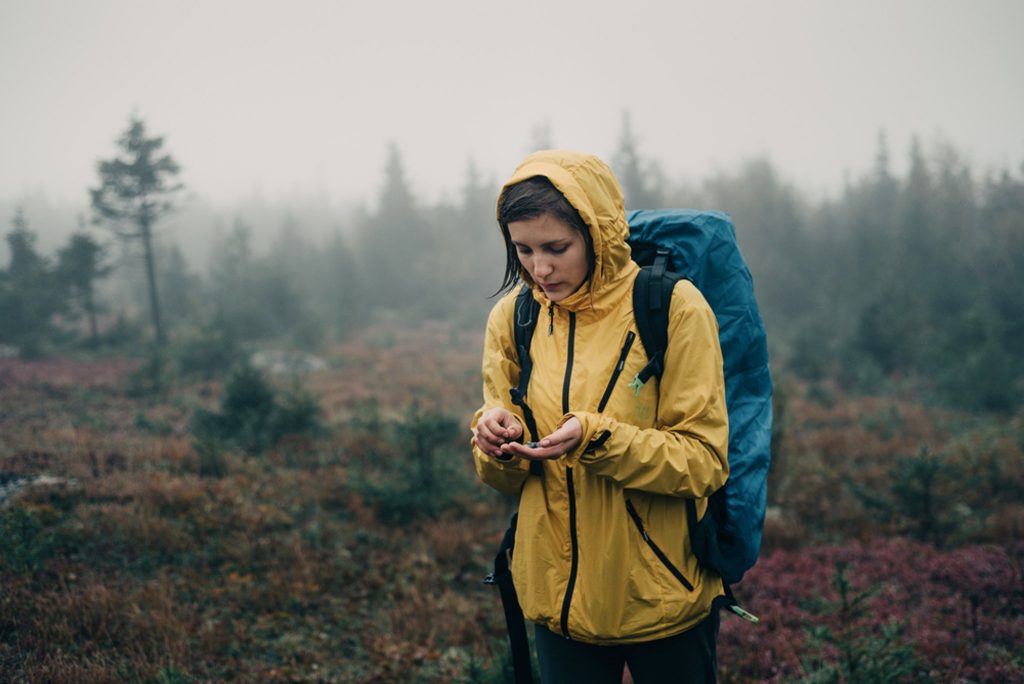
- Rain Ponchos: A rain poncho is the simplest type of rainwear available. They’re typically made from a waterproof material with an attached hood and offer good all-round protection against the elements
- Rain Jackets: These are lightweight jackets designed to keep you dry in light showers or on short hikes. Some may be windproof, while others feature collars for extra warmth when worn over thicker layers such as a fleece
- Rain Suits: A rain suit is the ultimate in wet weather protection. They’re ideal for hiking and other outdoor activities, with fully waterproof shells that cover you from head to toe. Some may have an attached hood while others feature built-in hand pockets or zippered vents
- Compression: Compressible jackets are designed with lightweight fabrics that can be compressed into small pouches – making them easy to carry in a backpack or on day hikes when you need extra protection from rain but don’t want too much bulk weighing down your bag. These options will usually roll up into a small pouch for easy carrying
- Rolling Sleeves: Many jackets have elastic cuffs that can be pulled down over your hands to keep them dry when you’re not wearing gloves. You’ll also find long sleeves with Velcro wrist closures or snaps – perfect if it’s chilly but will help seal out wind.
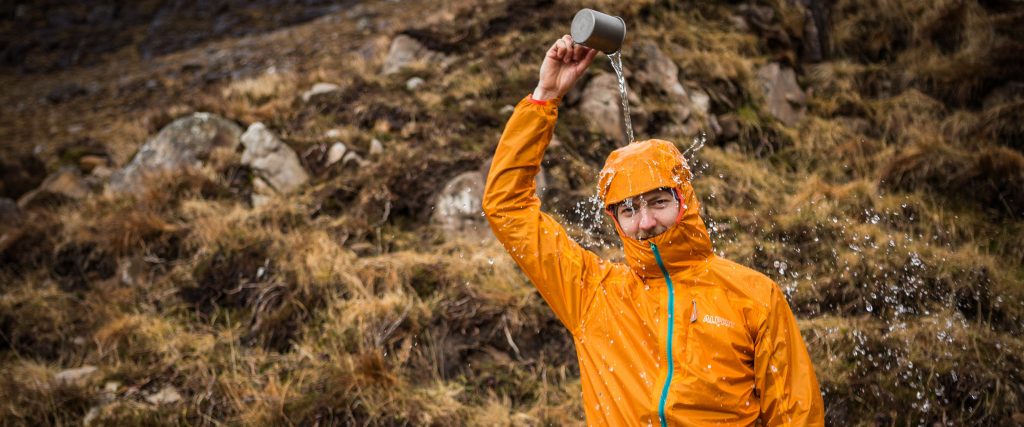
Factors To Consider When Choosing a Rain Jacket
Price: The price range varies widely between different types of rainwear. Budget-friendly jackets tend to be made from a water-resistant material, whereas more expensive coats will be fully waterproof and often include extra features such as hand pockets or zippered vents.
Breathability: If you plan on being outside for several hours in damp conditions, it’s important to look for a jacket that lets excess moisture escape so condensation doesn’t build up inside. Look for jackets with vented back panels or mesh-lined pockets to help promote airflow
Style: If you’re not worried about getting caught in heavy rain, there are plenty of stylish options available that will keep you looking great while staying dry. Consider how many pockets your jacket should have and if it’s important to be able to roll up the sleeves.
Waterproof Rating: Most jackets will offer a waterproof rating of 20,000mm or higher. The “higher” the number, the better it repels water, but it’s important to note that this rating doesn’t take into account the breathability of the fabric. Some rainwear with lower ratings will be more breathable than jackets rated at 30,000 or 40,000mm
Fit: It’s important to find a jacket that fits well so it doesn’t ride up when you move. If your jacket is too small, the fabric may stretch out of shape over time and any pockets or ventilation zippers will be harder to reach. Make sure sleeves are long enough to cover your wrists and check if there is an adjustable hem – this will make it easier to seal the jacket against your body
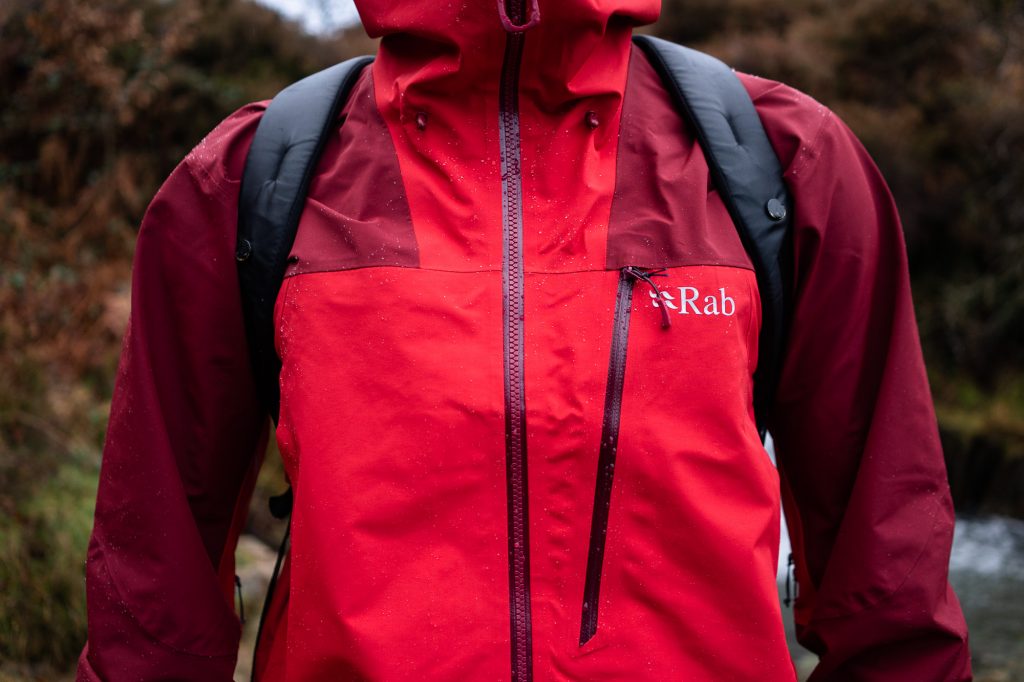
Number of pockets: A good rainwear should have at least one hand pocket and an internal media player compartment, but certain styles may include additional storage for items like keys or a wallet. Consider how important having multiple exterior pockets is before making your final purchase
Ease of use: Depending on your needs, you may prefer to have a zipper with an automatic puller or Velcro wrist closures. Extra features like these are designed for convenience so you can quickly get in and out of the jacket
Weight: If you’re going to be carrying your rainjacket in a bag for extended periods, it’s important to consider the weight and how easily it can be packed away. Look for jackets made from lightweight materials that compress well so they don’t take up much space when not being worn.
Care & Maintenance: Some coats come with specific instructions for washing, wiping with a damp cloth, or spot-cleaning. Others are machine washable so you can launder them at home with ease. If you’re unsure about how much care your jacket needs, look for a coat that can be machine washed or laundered easily at home.
Price: The price range varies widely between different types of rainwear. Budget-friendly jackets tend to be made from a water-resistant material, whereas more expensive coats will be fully waterproof and often include extra features such as hand pockets or zippered vents.
Durable water repellent: Waterproof jackets often have a durable water repellent (DWR) coating applied to the exterior fabric. If this has been compromised due to wear and tear, you can restore it by washing your jacket with soap and warm water. Once the fabric is completely dry, spray it with a DWR treatment before wearing it.
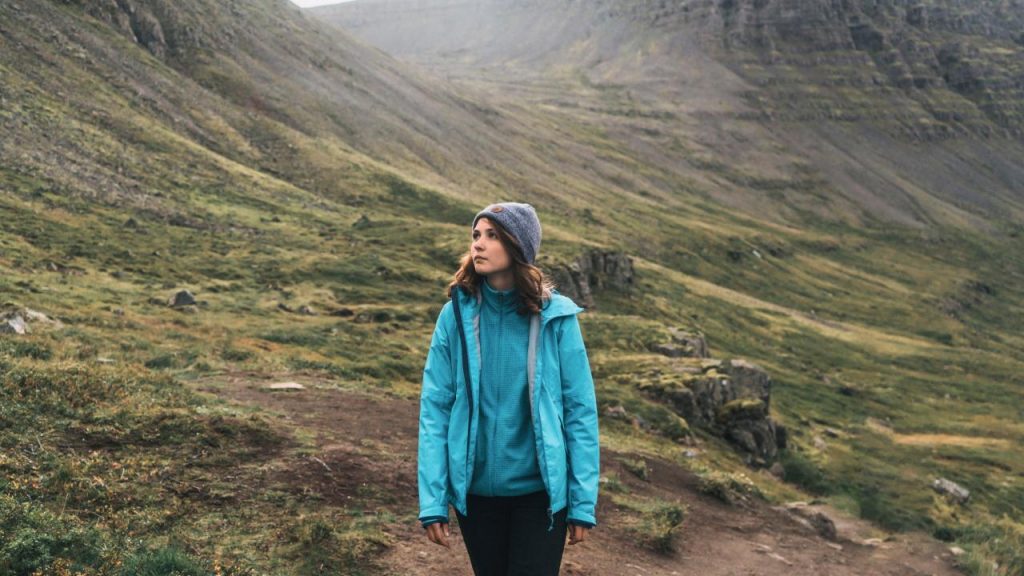
Fit: For a more advanced option that offers better performance in wet conditions and increased durability over time, look for Gore-Tex or eVent. These are used to make some of the most expensive coats on the market today because they’re lightweight, waterproof, and provide excellent breathability for multi-day use.
Futures: Some jackets offer a range of features to make them more versatile. For example, look for waterproof pockets that are ideal for storing your phone or wallet when you’re not wearing your coat. Jackets with adjustable hoods and cuffs give you the opportunity to customize how snugly it fits around your head and wrists.
Layer Construction: Some jackets are designed to be worn over a base layer while others work best on their own. If you’re looking for an outer shell that’s lightweight and can easily fit underneath another jacket, look for laminates or ultra-thin materials with minimal insulation.
Type of Insulation: Depending on how much insulation your jacket needs, you may want to look for a winter coat made from down or synthetic materials. Down offers superior warmth because it’s lightweight and highly compressible – perfect if you’re planning a long hike in cold conditions
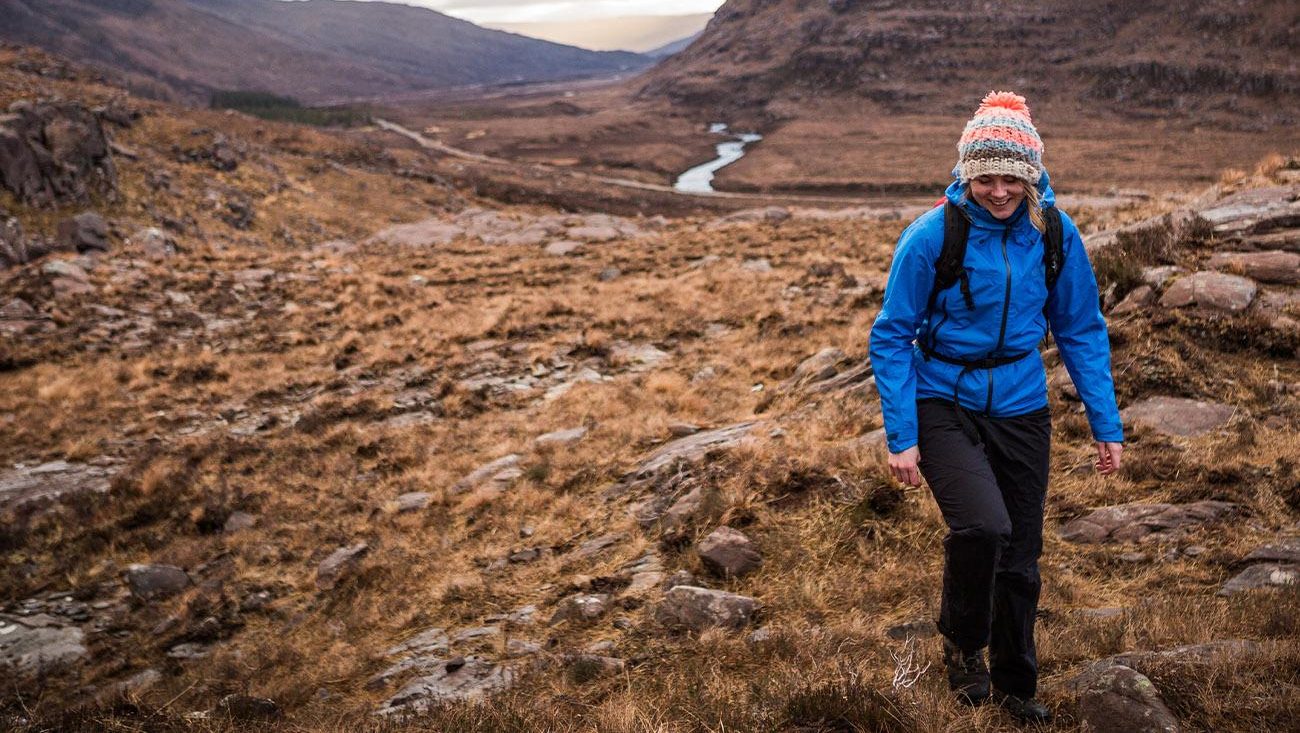
Layers construction
Rainwear is typically made with one of three construction types. The number represents how many layers are used to create the jacket, with higher numbers offering more protection against water seeping through the fabric
- Two-layer construction: These jackets are typically the least expensive and simplest to use, but can also be less durable. They’re usually made from a single material that’s been laminated with another to add strength in key areas
- Three-layer construction: Three-layered rainwear is often considered more comfortable because it allows for more insulation and breathability than two-layer options. It’s also more durable, which means you’ll get several seasons of use out of your coat before needing to replace it
- Four-layer construction: The most expensive jackets are usually made with four layers. They typically provide the best protection against water and wind, but also tend to be heavier than other types of rainwear
Layer Description
- Outer Layer: This layer protects you from wind and rain while also providing abrasion resistance. It’s usually made from a hard shell material, but some jackets have a softshell exterior
- Inner Layer: This layer is designed to wick moisture from your body and transport it away from your skin, keeping you as dry as possible. It’s typically made with a waterproof-breathable fabric such as Gore-Tex or eVent
- Middle Layer: The middle layer is what holds the jacket together. It’s usually made with padding to provide insulation and keep you warm in cold conditions
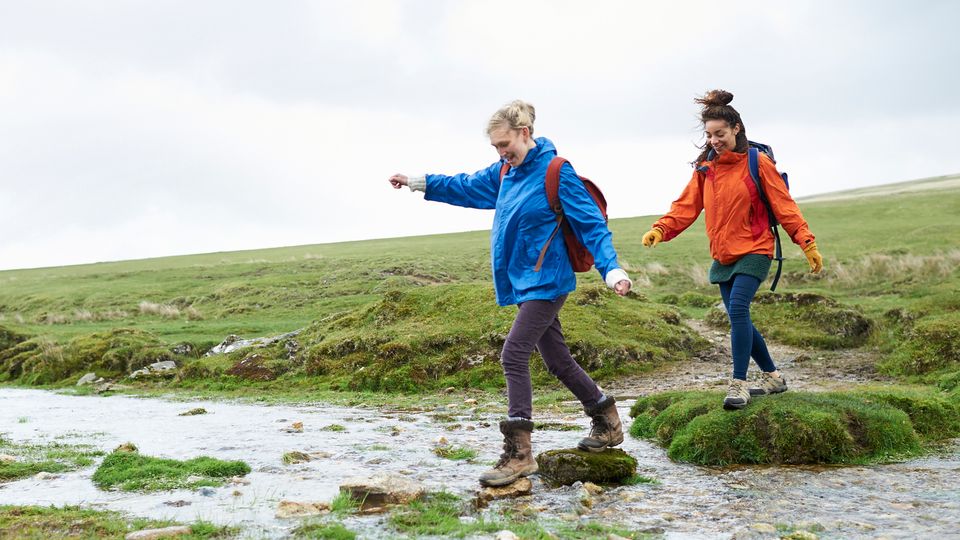
Type of Insulation
- Down Insulation: Down insulation is ideal for cold and wet conditions, but it’s also more expensive. It works by trapping body heat between two layers of fabric to keep you warm in even the most extreme weather
- Polyurethane: This material has been used since the 1970s because it provides superior water resistance while being extremely lightweight and easily manipulated into a variety of forms. Most rainwear that is made today will have a polyurethane coating applied to the fabric
- Gore-Tex: Gore-Tex is a proprietary material that has been developed by W.L. Gore and Associates create an impenetrable barrier against the weather, while still allowing water vapor from perspiration or breath to escape from the inside. It can be an expensive material to use, but it’s highly effective when used in a jacket that is designed for high-intensity activities
- Techlite: This type of insulation provides lightweight warmth and offers superior breathability or moisture management so you don’t get overheated. However, they aren’t as warm as other types of insulation, so they work best in milder weather conditions
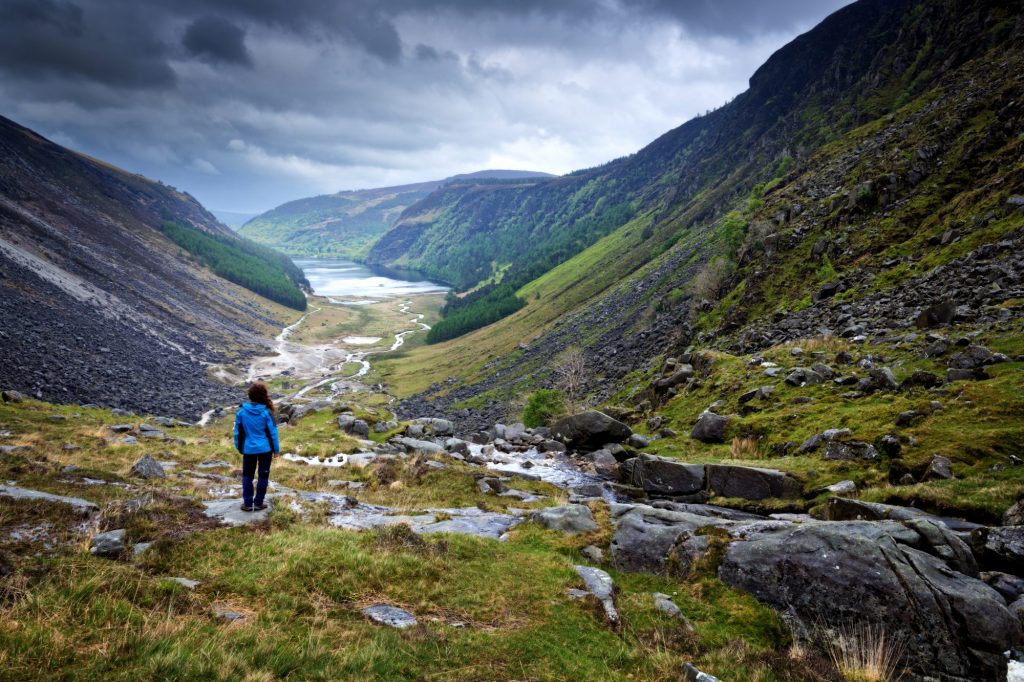
- Polyester: Polyester fibers can be woven together to create insulating air pockets that trap warm air near the skin while keeping cold air out. This material works great for a wide variety of weather conditions, but it isn’t very water-resistant and can easily become saturated
- Primaloft: Primaloft is microfiber insulation that offers superior warmth in the winter months. It’s also water-resistant, long-lasting and breathable
- Thinsulate: Thinsulate is a lightweight insulation that can be quite warm when used in the right coat. However, it isn’t great at repelling moisture or resisting wind, so it works best for milder conditions
- Polartec Power Shield Pro: This material is designed to provide superior warmth and wicking for active people who are always on the go. It can keep you warm even in wet weather conditions, but it’s not as durable or long-lasting
- Thermoball: Thermoball insulation is made up of tiny synthetic down clusters that create air pockets between them. This allows your body heat to be trapped and distributed so you stay warm without overheating, even in the coldest weather
- PrimaLoft Gold: This material is similar to Primaloft insulation but it’s made up of larger particles. It works well for anyone who wants a high-quality insulating layer that isn’t bulky or heavy

Material
- Conventional Fabrics: These are the most common materials used to make rainwear, and they’re often found on lower quality options that may not be fully waterproof or as effective at wicking away moisture from your skin. They tend to be made with coated nylon fabric which is lightweight but slightly less durable than other options
- Waterproof-Breathable Fabrics: Waterproof-breathable fabrics are usually made with eVent, Gore-Tex, or other similar materials. They’re highly durable and will keep you dry in wet conditions for several years before showing signs of wear
- Hybrid Materials: These jackets combine the best features of conventional fabric and high-tech waterproof fabrics to create a balance between breathability and water resistance. They tend to be made with multiple layers, which can make them heavier than other options but give you the best of both worlds when it comes to comfort and weatherproofing
- Other Materials: There are also jackets that are made from recycled materials or organic cotton because they’re less likely to harm the environment. Due to their nature, these jackets tend to be more breathable and lightweight than other options, but they may not perform as well in wet conditions
Note: When choosing a jacket fabric it’s important that you pick one that offers the best balance between waterproofing and breathability for how often you plan on wearing it. If you’re just planning on using your jacket for light activities like walking around town or running errands, a lightweight option is fine since they tend to breathe better than other fabrics
If you plan on doing more intense physical activity during which you’ll sweat heavily, look for waterproof-breathable fabric that wicks away moisture from your skin and keeps you dry
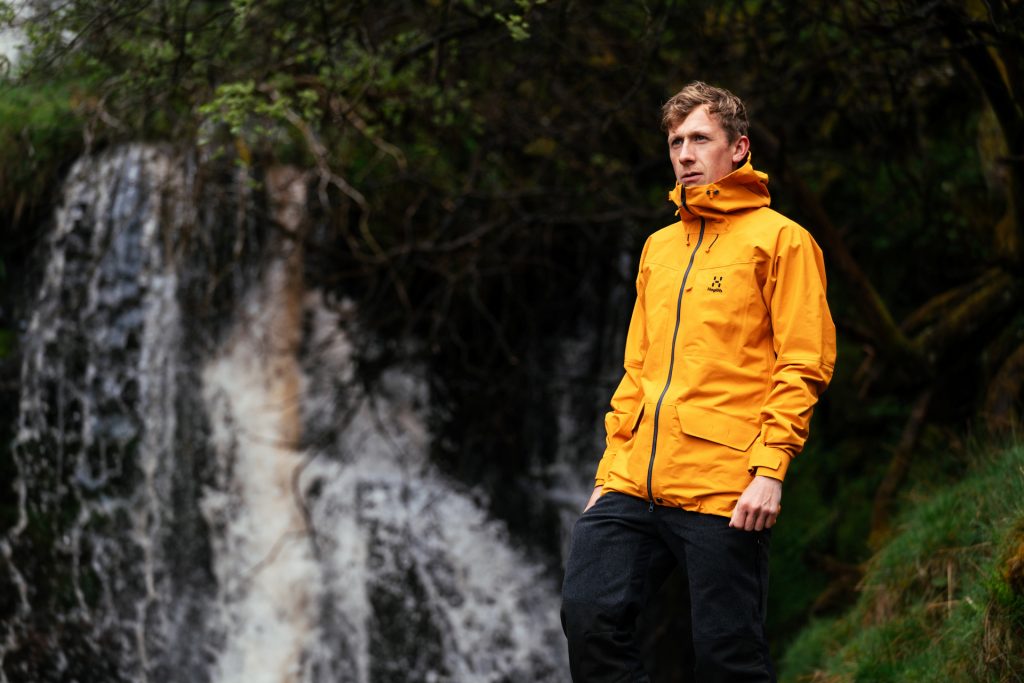
Rain Jacket Features
- Pit Zips: Pit zips are vents that help regulate body temperature by allowing you to open up the chest area for extra ventilation. They can be unzipped from both ends or just one depending on which style of jacket you buy
- Waterproof pockets: These come in a variety of styles and sizes so it’s important to check what your jacket offers. Some pockets are located on the outside of a jacket and some may be waterproof
- Hood: A hood can help protect you from rain and wind, but also allows for extra warmth when worn over a hat or helmet
- Pockets: Most jackets feature zippered hand-warmer style pockets that allow you to keep small items secure and dry. Some jackets offer more pockets than others, allowing you to carry a variety of items on your person
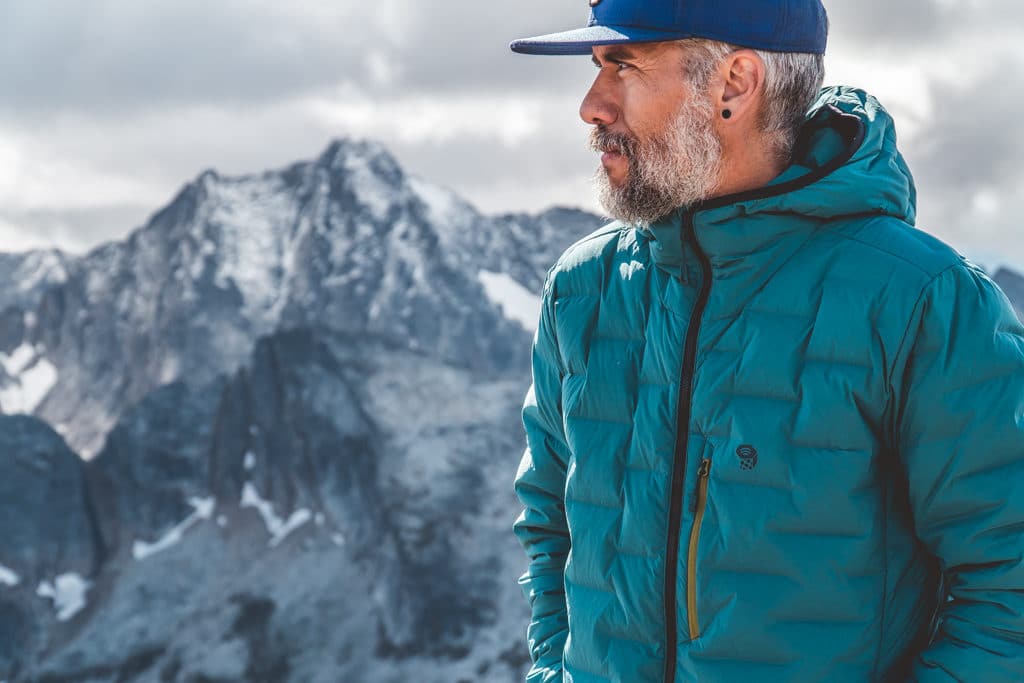
- Zippers: You’ll find two main types of zippers – coil or molded plastic zips that are built into the fabric itself while some have metal teeth for better waterproofing
- Vents: A vent is an opening in a jacket that allows warm air to escape from your body, which in turn helps prevent you from overheating. It may be a simple mesh area or it can be a full-blown vent with zippers
- Waterproof Rating: Waterproof ratings are tested by the manufacturer and will offer an idea of how well they’ll keep water out while allowing moisture to escape from your body
- Seams: Seam tape is applied to all seams on a jacket that have been stitched for waterproofing. It helps create an invisible barrier that keeps moisture out while keeping you dry
- Reflectivity: A reflective strip or logo will help improve visibility when it’s dark, which can be useful if hiking in the evening or early morning hours
- Machine Washable: Jackets that are machine washable allowing you to keep your rainwear clean and fresh between washes. You may have to pay a bit more for this feature, but it’s worth the investment if you plan on using your jacket regularly
- Compressibility/ Packability: This is an important factor for anyone who wants to save space when traveling or storing their jacket. Some jackets are compressible and can be rolled up into a small bag, while others will simply pack away in the pocket
Some jackets are designed for specific activities while others are versatile enough to be used in a variety of settings
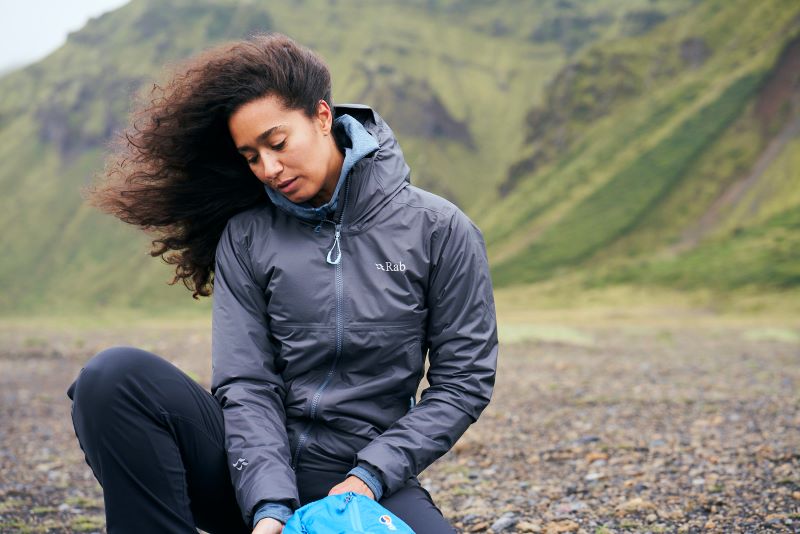
Laminates vs. Coatings
- A laminate fabric will be made from a sheet of plastic film that has been coated with another type of waterproof material to create an impenetrable barrier. The most common coating materials are polyurethane or silicone, but you’ll also see ethylene vinyl acetate (EVA) used as well
- Coatings cover the outside of the fabric to create water resistance and will keep you dry in any type of precipitation. It can be applied during the manufacturing process or sprayed on at home if you’re looking to waterproof an existing piece of clothing
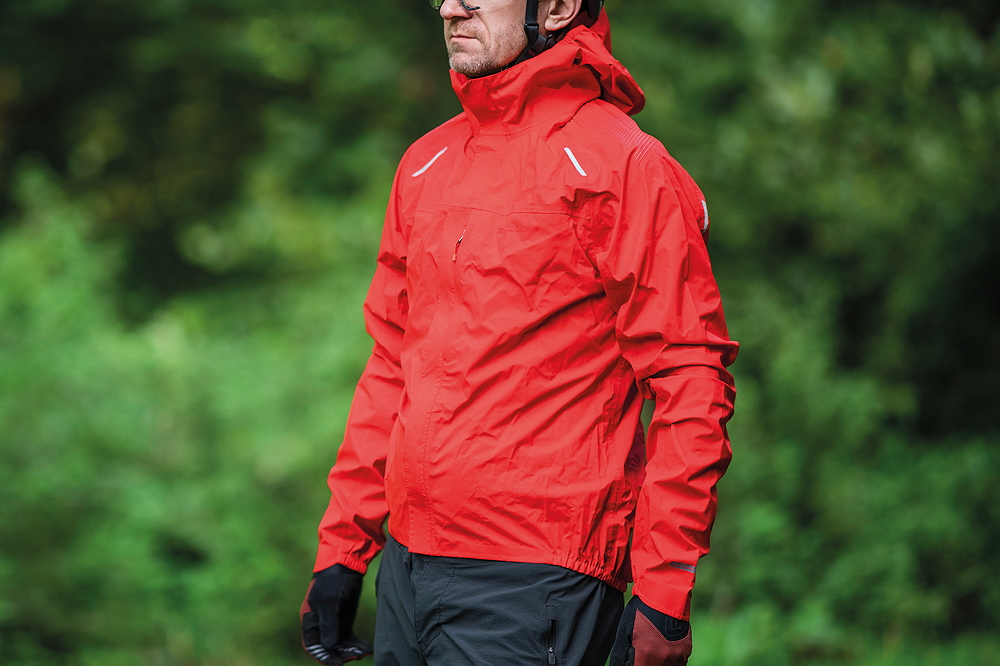
Durable water repellent (DWR)
is a coating that is sprayed on over the outside of your rainwear to help it bead up and repel water. It works by causing water droplets on the surface to spread out, which helps them roll-off easily so you don’t get wet
DWR coatings are important because they can keep you dry for quite some time before they need to be reapplied. However, if they do become less effective due to heavy use or weather conditions, simply re-treat with DWR spray
The Best Rainwear Brands
- Columbia
- Marmot
- Patagonia
- The North Face
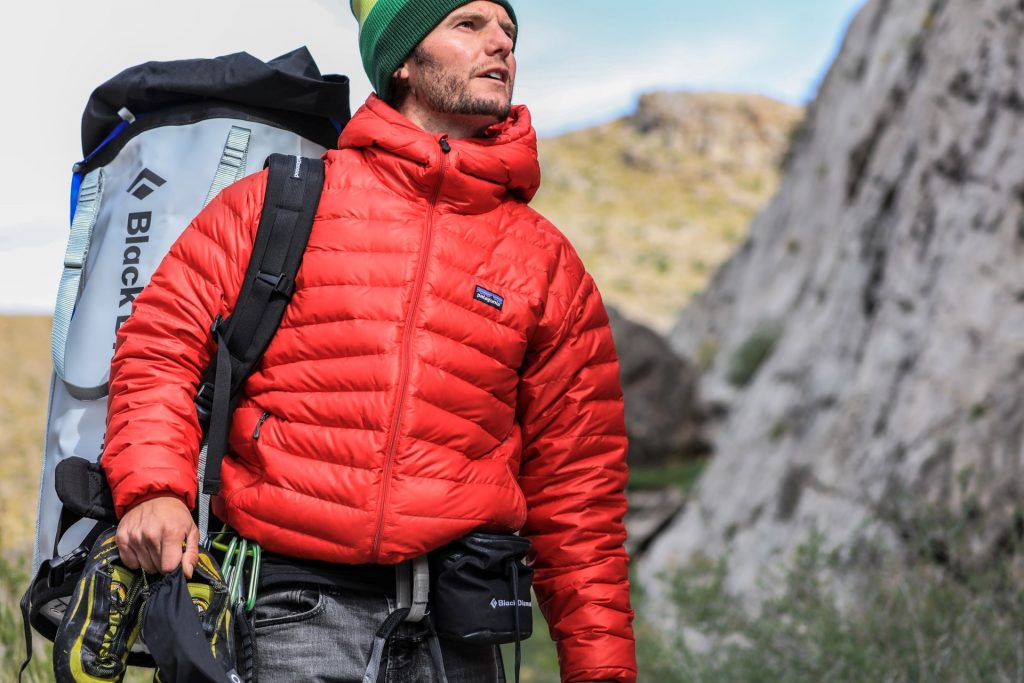
FAQ
Q: How do I choose the right Rainwear for my needs?
A: It’s important to consider your lifestyle before choosing a rain jacket. Are you an avid hiker or fisherman who spends lots of time outdoors? Or, are you simply looking for something that will keep you dry during light showers while commuting back and forth from work? Answering a few questions can help narrow down the best type of jacket to buy
Q: What are DWR coatings and how do they work?
A: A durable water repellent (DWR) coating is sprayed onto your rainwear after it’s been manufactured. It creates an invisible barrier that causes water droplets to bead up and roll off easily so you don’t get wet
Q: What is seam tape?
A: Seam tape is a waterproof material that’s applied to all seams on your rainwear. It helps create an invisible barrier that keeps moisture out while keeping you dry
Q: How often should I wash my jacket?
A: It’s best to wash your jacket after every use if it starts to smell musty or you suspect the DWR has stopped working. You can also purchase a waterproofing spray and apply it before storing your rainwear away for extended periods of time in order to keep it fresh and ready to go when needed
Q: What is seam tape and why should I care about it?
A: Seam tape is a waterproof material that’s applied to all of the seams on your rainwear. It helps create an invisible barrier that keeps moisture out while keeping you dry, which can make it difficult for water droplets to sneak inside and soak through the fabric during precipitation or unexpected splashes
Q: How do I choose the best Rainwear for my needs?
A: It’s important to consider your lifestyle before choosing a rain jacket. Are you an avid hiker or fisherman who spends lots of time outdoors? Or, are you simply looking for something that will keep you dry during light showers while commuting back and forth from work? Answering a few questions can help narrow down the best type of jacket to buy
Q: Why should I choose a waterproof-breathable jacket?
A: Waterproof-breathable jackets help keep you dry without requiring the use of pit zips or other openings that allow for added ventilation. The most common type of coating is polyurethane, which helps create a barrier against water droplets and prevents them from seeping through the fabric. However, you may also see ethylene vinyl acetate (EVA) used as well
Q: How do I ensure my rainwear will last a long time?
A: It’s important to take good care of your rain gear so it can serve its purpose for many years to come. You should always avoid bleach when washing your jacket, which can deteriorate the quality of the fabric. To keep it fresh and ready to go for its next use, try using a waterproofing spray before storing away for extended periods of time. This will help keep the jacket fresh and ready to go when needed
Q: How do I choose a waterproofing spray?
A: The easiest way is to simply read the label of your rainwear or contact customer service if you’re still unsure about what type of product to buy. Most manufacturers offer some type of treatment that can be applied to your rainwear in order to keep it fresh and ready for its next use
Q: How do I clean my rain jacket?
A: It’s best to wash your jacket after every use if it starts to smell musty or you suspect the DWR has stopped working. You can also purchase a waterproofing spray and apply it before storing your rainwear away for extended periods of time in order to keep it fresh and ready to go when needed
Q: How do I ensure my rain jacket is the best quality possible?
A: While there are no strict guidelines, you should always purchase with a reputable retailer. This will help you avoid low-quality counterfeits that may not last as long or perform to the same standards as a genuine rain jacket. It’s also helpful to choose one that is made with seam tape, which helps create an invisible barrier and keep moisture out while keeping you dry. By answering a few questions, you can find one that’s best suited for your lifestyle and needs

